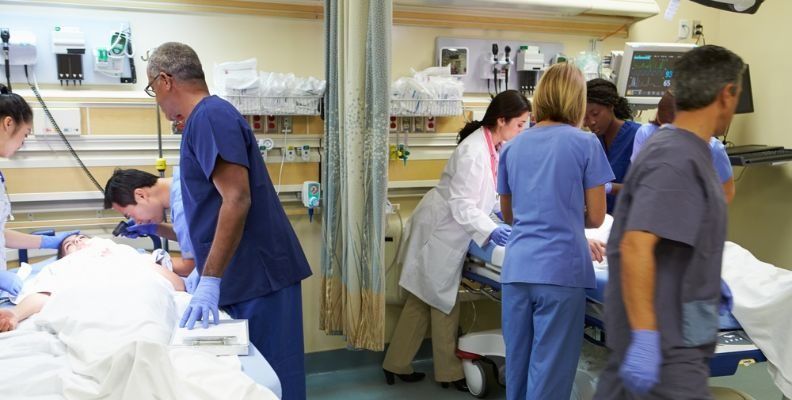What is Patient Safety and Why Does It Matter?
Patient safety is a global term whose definition is the avoidance, prevention and amelioration of adverse results stemming from the process of healthcare.
Simply put, patient safety is the safe and effective treatment of patients within the healthcare system.
As we learn more about how and why people make errors that can lead to adverse, even tragic, results, the mindset has changed from a single, isolated event to a systems framework. By exercising careful and due diligence, that is incorporated into systems of care delivery, healthcare professionals are more able to provide patients with services that meet the expectation of a safe environment, often when they are the most vulnerable.
Healthcare delivery that embodies a culture of safety must include several elements. It must be safe, effective, patient-centered, delivered in a timely fashion, and equitable among patients. This is a pretty tall order when one considers the number of patients that a healthcare professional can be responsible for in the course of a single day.
With each patient having different healthcare needs as well as treatment modalities, healthcare workers must exercise complete diligence at all times in order to insure quality patient safety. Nurses continue to be at the forefront of many efforts to ensure for that safety.

Patient safety can be examined across a spectrum, with all elements of patient planning and care provision considered critically important. The first and most important element of safe patient care is the prevention of critical incidents, namely those that could result in patients dying prematurely as a result of healthcare errors. A simple error can become critical in a matter of seconds and healthcare workers, especially nurses, must realize that they hold the lives of their patients in their hands, often quite literally.
The delivery of efficient and timely healthcare services can also make a difference when it comes to patient safety. The majority of healthcare situations involve helping those who are ill or injured to recover from those processes with consistent, process-driven, professional healthcare. Patient safety during these times includes the development and implementation of effective healthcare plans, careful monitoring of the conditions, and an astute and regular assessment of patients’ needs.
Timely interventions, accurate and thorough assessments, concise documentation and clear communication are nursing priorities that are essential to this aspect of patient safety. Routine rounding, safe staffing ratios and regular chart reviews are also essential steps in creating a culture of safety that also increase efficiency and effectiveness in healthcare.
One final aspect of patient safety that often goes overlooked is the provision of culturally competent care. This is an aspect of safety in healthcare that should not be underestimated. Language barriers, culturally sensitive interviewing and effective patient teaching are just some of the facets of cultural congruence in nursing that must always be at the forefront of safe and effective patient care.
Understanding how and why things can go wrong helps us all as healthcare workers. Using root cause analysis and systems theories to look at healthcare quality and safety has led to significant changes in how we do our jobs as nurses.
Medical errors can occur because of a lapse in memory or a failure to act on a direct order or instruction in the healthcare plan. But errors can also occur in the knowledge and planning phases of healthcare. Because patient safety is currently being considered as part of a system, it is important to note that attention to patient risk factors, task oriented aspects of patient care, individual factors, team interactions and organization, and conditions in the workplace and institution can all contribute to patient safety or the lack thereof.
There is much that can be done to improve processes within the healthcare industry to minimize room for errors. Standardizing and simplifying procedures can increase reliability overall. Reducing medication errors by adding protocols such as a second nurse checkoff and ensuring for the five rights of medication administration can reduce the frequency critical incidents.
Through professional development and training, healthcare workers, especially nurses, can learn to better anticipate hazardous situations and proactively seek to maintain safety, even in critical or emergency situations.
Overall, patient safety is a major concern and one that should be a top nursing priority at all times. Healthcare institutions can help support patients and staff by building a culture of safety. And you have a role to play as well, whether you are a nurse leader, planning risk management training or if you are on the floor, demonstrating safe and timely reporting, you are crucial to a culture of safety.
As we enter Nurses Week 2016, make it a priority to create a culture that values and promotes patient safety. Offer to double check your coworker’s insulin. Check the sharps containers. Make that 0400 rounding count, to prevent patient falls. Ask your manager about what systems are in place for critical incident reporting. Read up on your infection control policies. You can even print off this article and leave it for night shift to peruse to stay awake.
There are so many things you can do to improve patient safety, that the list is nearly endless. When it comes down to it, you are at the forefront of ensuring for the safety of each and every one of your patients, so finally, remember to take the time to listen to what patients have to say, both verbal and non-verbal. Ultimately, paying close attention to the person you are caring for is the first and most essential step to ensuring for safe and effective nursing care.
Happy Nurses Week 2016, from all of us at BestNursingDegree.com!




